For distances up to 30 meters, the decision of whether to choose a copper or fiber optic HDMI cable depends on several factors:
1. Cost
- Copper core HDMI cables: are usually less expensive and offer a cost-effective solution for short distances (e.g. under 30 meters). Suitable for most home and general business use.
- Fiber optic HDMI cable: more expensive, but offers unmatched signal quality and stability for long distance transmission and high performance scenarios (e.g. transmitting 4K/8K content). For specific applications, such as high-end home theater or professional-grade video transmission, the additional cost may be justified.
Let’s see their price on Amazon US market:
Copper HDMI 2.0 cable 100ft 30meter price
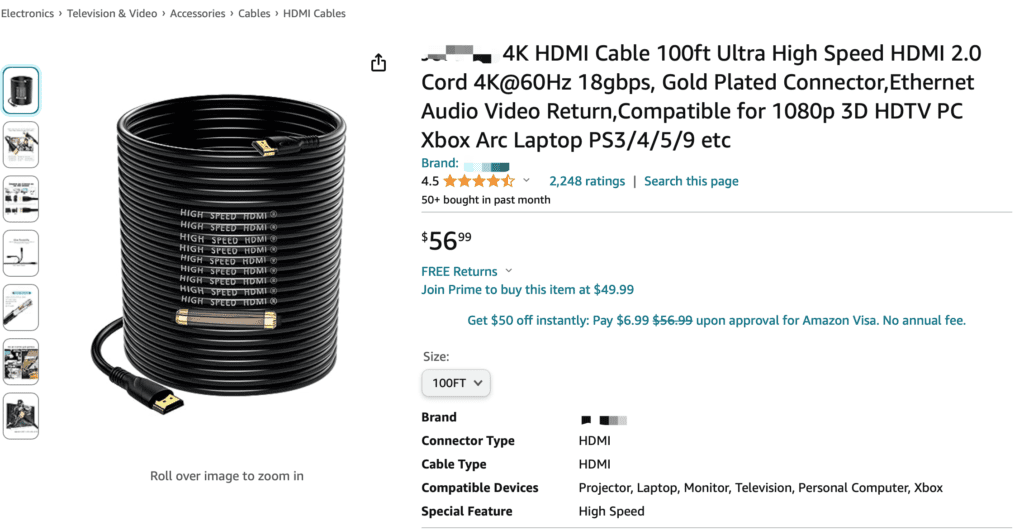
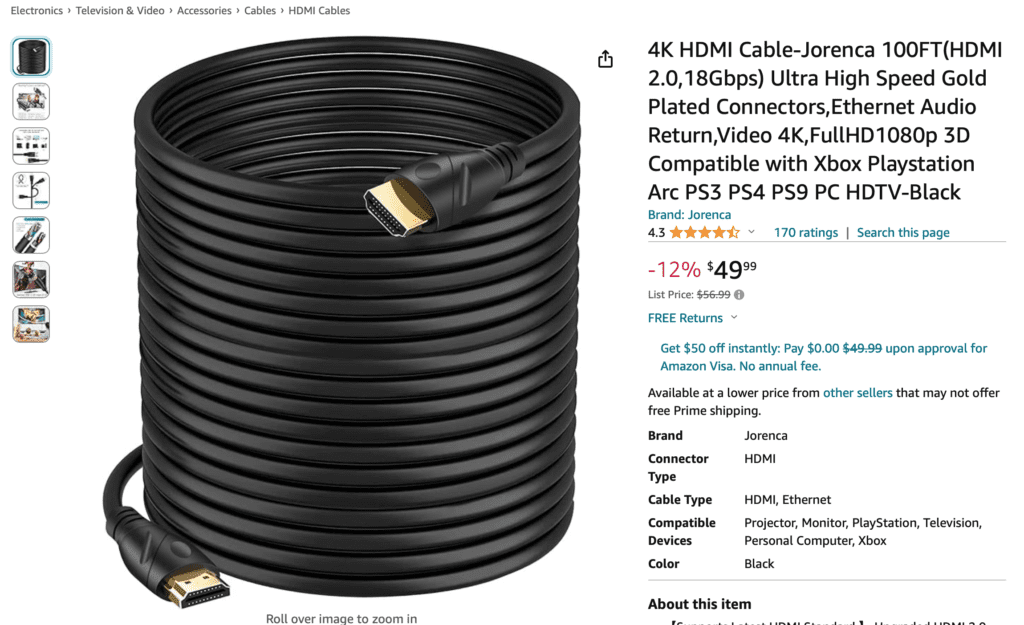
Here you can see 100ft 30meter HDMI 2.0 cable with booster sell USD 56.99, without booster sell USD 49.99, it’s just USD 7 difference.
Fiber HDMI 2.0 cable 100ft 30meter price
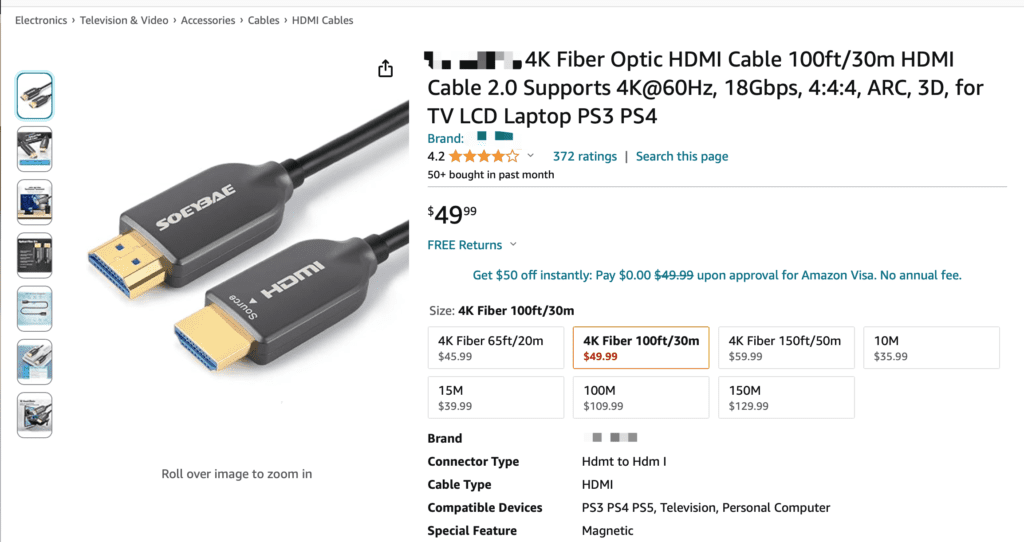
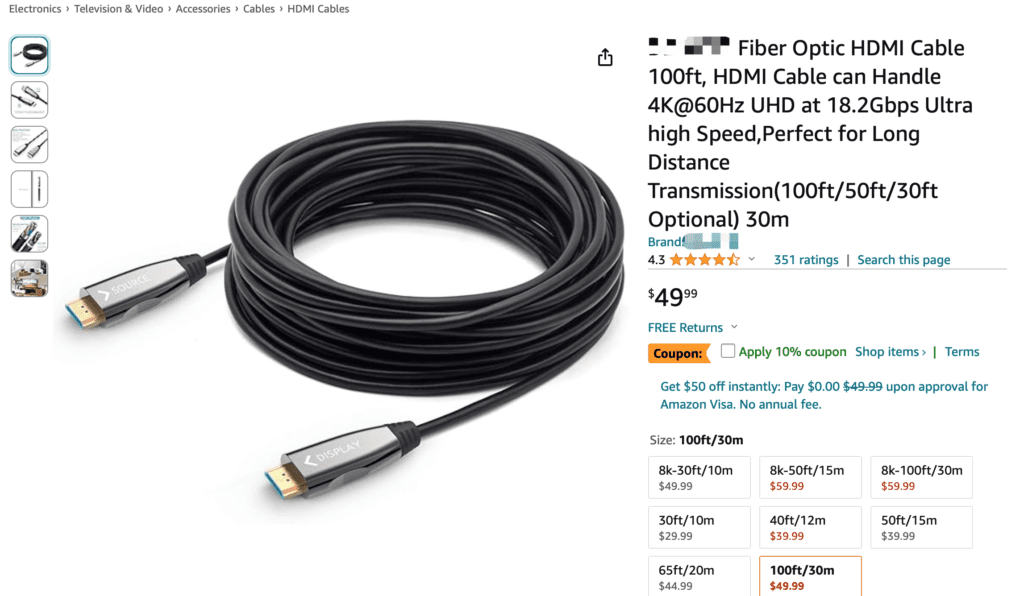
Fiber HDMI 2.0 cable 100ft 30meter retail price is at USD 49.99, It’s even cheaper than copper hdmi 2.0 cable with booster !
2. Performance
- Copper HDMI cable: Reliably transmits HD and 4K signals over shorter distances, but may be subject to high-frequency electromagnetic interference, especially in dense electronic equipment environments.
- Fiber optic HDMI cable: Virtually immune to electromagnetic interference, capable of maintaining signal integrity over longer distances, and ideal for transmitting high-resolution video (e.g. 4K/8K).
Obviously, if you can good performance fiber hdmi cable, it’s recommend to buy it , it’s more slim, sort than copper hdmi cable.
If you need a reliable supplier for such fiber hdmi cable with good performance, welcome to contact us!
3.SDI cables vs HDMI cables in camera applications
SDI Cables
- Cost: While the initial investment in SDI cables and associated equipment may be higher, they offer superior signal stability and reliability, especially over long transmission distances. For professional broadcasting and film production, this additional investment can be compensated by reducing signal loss and interference, thus saving post-processing and maintenance costs.
- Application Scenarios: SDI is the standard in the professional video industry and is particularly suitable for applications that require long distance signal transmission and extremely high reliability, such as live broadcasting and TV production.
How is the retail price at Amazon US ?
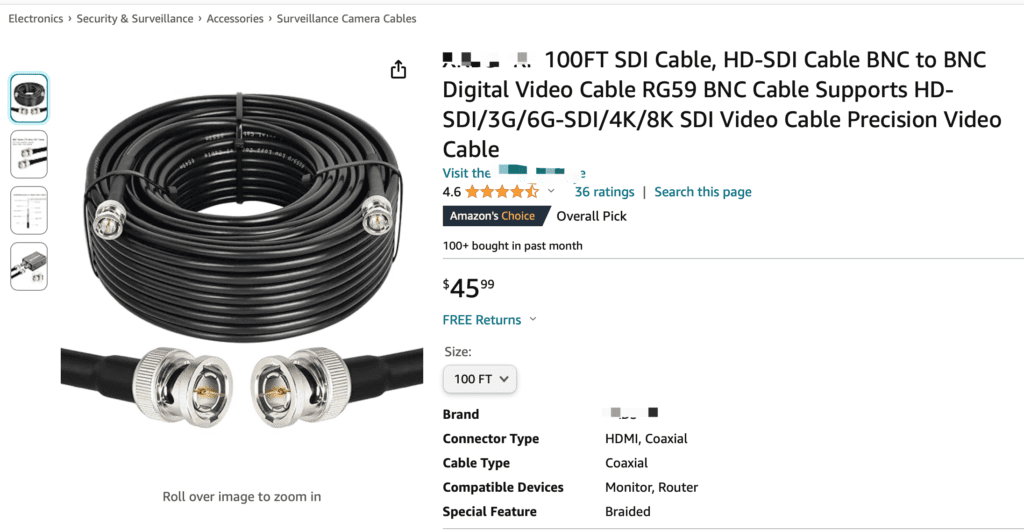
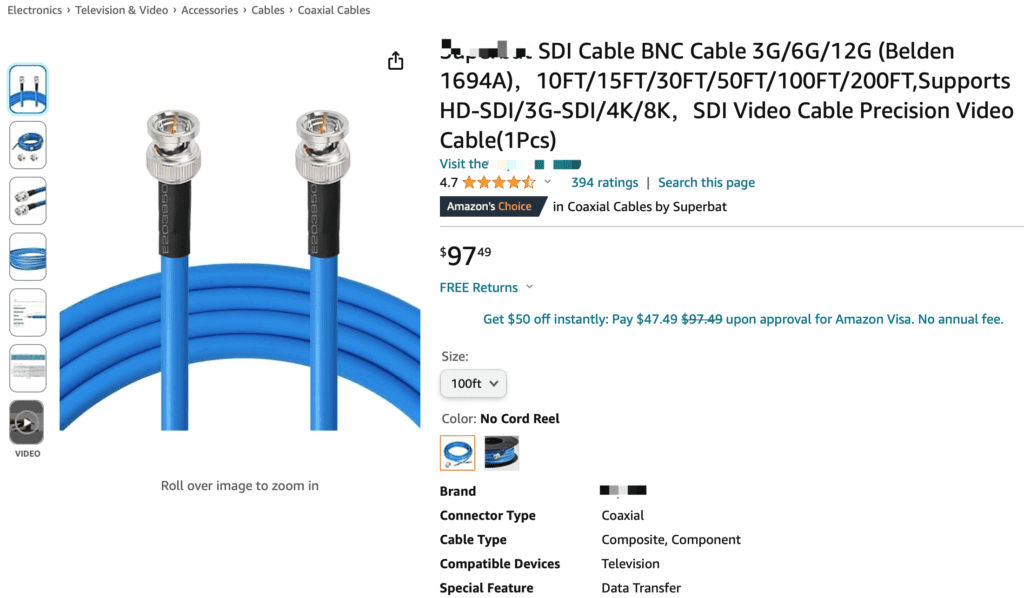
At 100ft long, the price is closed to hdmi cable’s price, even some brands are more expensive . SDI cables sell far less overall than HDMI cables, which is part of the reason why they cost more than HDMI cables.
HDMI cable
- Cost: For camera applications over short distances (e.g. up to 30 meters), HDMI offers a cost-effective solution. It is widely used in consumer-grade and some professional-grade applications such as video conferencing, simple live broadcasts, etc.
- Performance Limitations: The effective transmission distance of HDMI signals is relatively short, especially when transmitting high-resolution video. While HDMI-based extension solutions exist, these typically add cost and may compromise signal quality.
Comprehensive recommendations
- For applications** under 30 meters and with a limited budget where signal quality requirements are not extreme (e.g. 1080p or standard 4K content), copper-core HDMI cables are a reasonable choice.
- If you need to transmit high-resolution content** (e.g. 4K/8K) in environments with a high level of electromagnetic interference, or have high requirements for signal stability and quality, then fiber optic HDMI cables may be a better choice, albeit at a higher cost.
- For professional camera applications, especially in scenarios where long distance transmission or extremely high signal stability is required, SDI cables offer unrivaled performance and reliability. Although the initial investment is large, it is often worth it for the professional industry.
See a video:Why I Don’t Use HDMI Fiber Cables Anymore
When choosing the right cable, it is important to consider the specific application needs, budget constraints, and the quality and stability requirements of the content to be transmitted. We hope this detailed information will help you make a more informed decision.
